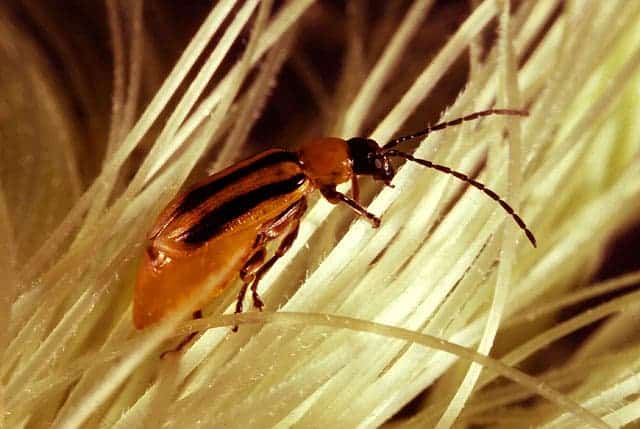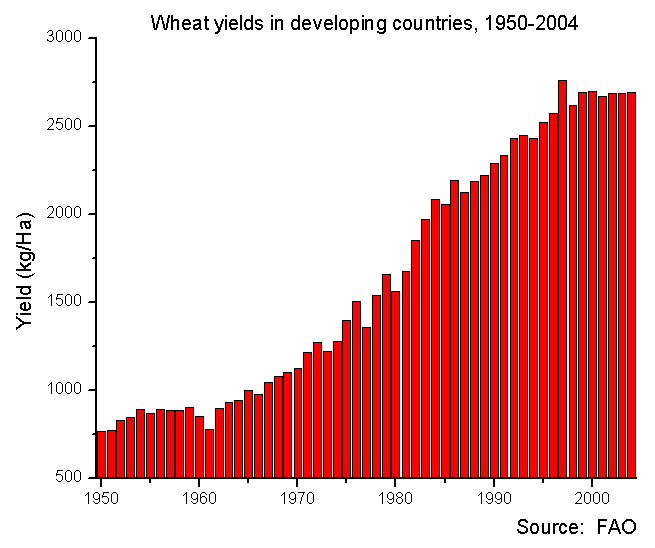According to a study published Monday, the Western Corn Rootworm (actually a beetle larvae) has already developed a resistance to not one but two strains of generically modified corn; this happened mostly thanks to the over-reliance and improper implementation of the crops by farmers.
Genetically modified organisms (GMOs), for all the bad rep they get, are what keep the world alive – literally. Genetic modification caused by human activity has been occurring since humans first domesticated animals in 12 000 BC. and plants around 10,000 BC – it just wasn’t done in the lab, with advanced research techniques. We’ve been selectively breeding different genetic strains for most of what we call human history. If it weren’t for what we call today the Green Revolution, the world wouldn’t be nearly able to support the 7 (soon to be 9) billion people on this planet. The Green Revolution refers to a series of research, development, and technology transfer initiatives, occurring between the 1940s and the late 1960s, that increased agriculture production worldwide; the “father” of the Green Revolution is Norman Borlaug, who is credited with saving over a billion people from starvation.
But the problem is, we are still, for the most part, relying on the same techniques we’ve been using for decades – we haven’t continued adapting at a fast enough pace – and pests have. If we needed yet another proof of fast evolution, here it is.
It all started with pesticide resistance – Pesticide resistance is increasing in occurrence. Farmers in the USA lost 7% of their crops to pests in the 1940s. Over the 1980s and 1990s, the loss was 13%, even though more pesticides were being used; and we’re running out of chemical options.
For this purpose, GMO crops have been increasing in popularity in agriculture – genetically modifying a plant to resist certain enemies obviously has enormous advantages, but in a way, it falls off in the same way that pesticides fall off – bugs develop resistance faster than we can modify it.
Researchers had already shown that bugs were becoming resistant to the Cry3Bb1 strain of Bt Corn back in 2009. Two years later, researchers subsequently found the worms chomping on a second strain of Bt Corn, mCry3A, in an adjacent field – because the crops were so close, it seems likely that they developed cross-resistance to both strains.
Here’s how this works: if the strains aren’t managed correctly, they don’t produce enough toxins, and kill most of the rootworms. However, the biggest and healthiest ones survive, and in time, future generations will be much stronger and healthier, and will have developed immunity (more or less) to the toxins. In other words, instead of destroying the enemy, we’re training it to become stronger (a rather similar thing happens to germs, which is why many scientists are worried we’ll soon face a threatening generation of supergerms). So at the moment, Iowa has some very strong, healthy, resistant superworms, which would like nothing more than to spread even more.
Nature has, apparently, found a way. Will we?
Scientific References: Aaron J. Gassmann1, Jennifer L. Petzold-Maxwell, Eric H. Clifton, Mike W. Dunbar, Amanda M. Hoffmann, David A. Ingber, and Ryan S. Keweshan. Field-evolved resistance by western corn rootworm to multiple Bacillus thuringiensis toxins in transgenic maize. PNAS, doi: 10.1073/pnas.1317179111











